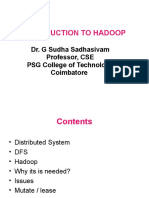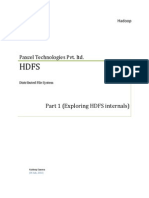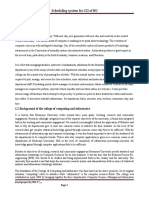0% found this document useful (0 votes)
98 views46 pagesHadoop Ecosystem & HDFS Guide
The document provides an introduction to Hadoop and its ecosystem. It describes Hadoop as a framework that allows distributed processing of large datasets across clusters of computers. The Hadoop ecosystem includes tools like MapReduce and HDFS that provide core functionality for managing big data, as well as additional tools that support building and managing big data applications. HDFS is specifically designed to reliably store very large files across a Hadoop cluster by breaking files into blocks and replicating blocks across multiple nodes for fault tolerance.
Uploaded by
Gokul J LCopyright
© © All Rights Reserved
We take content rights seriously. If you suspect this is your content, claim it here.
Available Formats
Download as PDF, TXT or read online on Scribd
0% found this document useful (0 votes)
98 views46 pagesHadoop Ecosystem & HDFS Guide
The document provides an introduction to Hadoop and its ecosystem. It describes Hadoop as a framework that allows distributed processing of large datasets across clusters of computers. The Hadoop ecosystem includes tools like MapReduce and HDFS that provide core functionality for managing big data, as well as additional tools that support building and managing big data applications. HDFS is specifically designed to reliably store very large files across a Hadoop cluster by breaking files into blocks and replicating blocks across multiple nodes for fault tolerance.
Uploaded by
Gokul J LCopyright
© © All Rights Reserved
We take content rights seriously. If you suspect this is your content, claim it here.
Available Formats
Download as PDF, TXT or read online on Scribd
/ 46






















































































